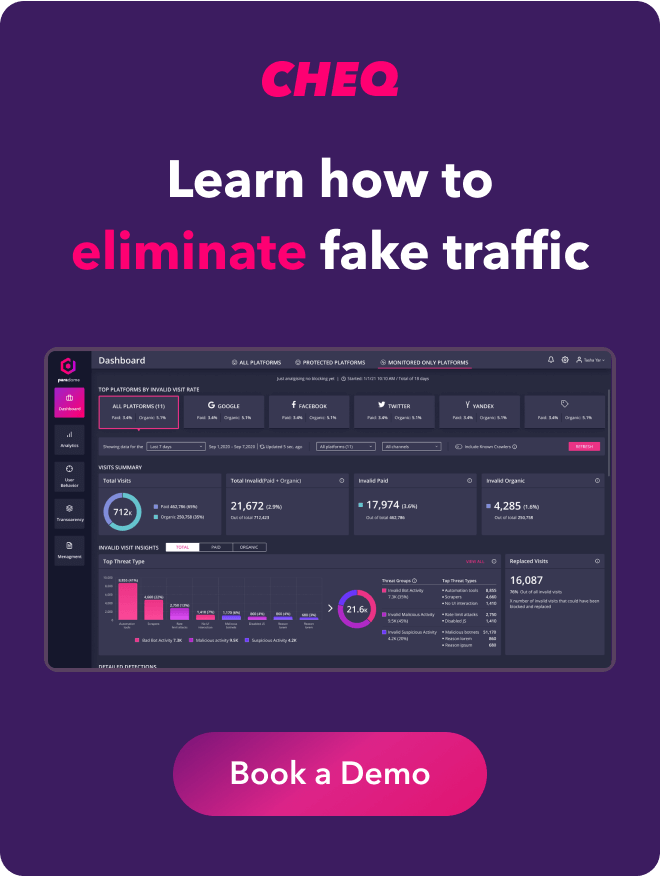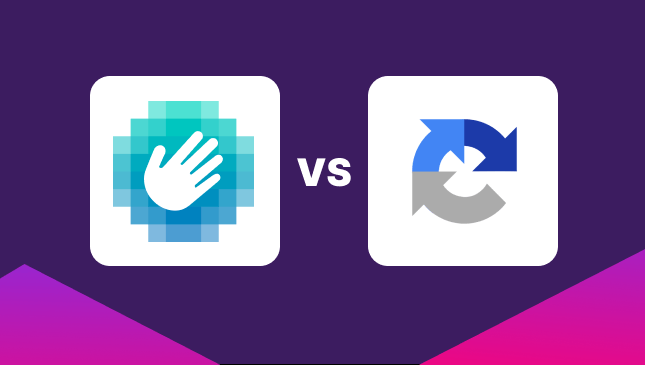What is the difference between growth marketing vs performance marketing?
Oli Lynch
|Marketing | April 07, 2021

When it comes to marketing, your end goal is almost always growth and performance. However harnessing the benefits of growth marketing and performance marketing requires uniquely individual approaches.
So, what are the key differences between growth and performance marketing, and when should you use them?
Performance marketing
Generally speaking, performance marketing relates to paid strategies designed to generate quantifiable results in the shortest amount of time.
When you think of performance marketing, you’ll most likely think of:
- Paid search
- Paid social
- Display advertising
- Affiliate marketing
- Search engine optimisation
- Content marketing
- Programmatic advertising
These are often mid to bottom of the funnel strategies (MoFu/BoFu), although they can be applied throughout the customer journey.
Marketers will often focus their efforts heavily on performance marketing precisely because it offers fast results and a verifiable Return On Investment. For example, if you’ve spent $1000 on pay per click ads, it’s easy to see how many clicks or conversions you’ve made for your money.
And, as you’re paying for the performance, you have more control over a number of factors including how, when and where your ad is seen, not to mention targeting specific search terms and demographics.
However, there is some crossover between growth marketing and performance marketing, as we’ll see.
Growth marketing
Rather than the instant hit of ‘performance’, growth marketing focuses on the long term goals of generating organic traffic and increasing brand awareness, visibility and customer retention, for instance, through content marketing.
Generally speaking, growth marketing is less concerned with KPIs such as sales, email opens, downloads and conversions, and more focused on the strategy of building the brand.
But, that’s not to say that growth marketing is totally above paying for performance when it needs to. And professional growth marketers will also be avid consumers of analytical data, hungry to understand how they can tweak their strategy for more effective results.
The growth marketing toolkit will most likely include:
- Email and contact list curation
- Content marketing
- Search engine optimization
- Organic social media
- Earned social media
- Brand recognition
- Customer retention and loyalty
- Referral marketing
Although growth marketing can (and often does) focus on top of the funnel (ToFu), it’s often a more holistic marketing approach, encompassing all stages of the customer journey.
Like all factors related to marketing, there is a complex ecosystem where one thing feeds another, which growth marketers need to understand in order to see effective results.
The performance and growth marketing ecosystem
We, as consumers, don’t necessarily react to one form of marketing exclusively. Your average customer might see a paid ad on social media and disregard it, but later read an article mentioning your product and perhaps click on an organic link from Pinterest.
However, before committing to purchase, the customer will often do their research by reading reviews on TrustPilot or an independent review website, or even talk directly to someone who has used the product/service before.
Both the performance and the growth marketer understand that one thing feeds into another, using the funnel model.
But while performance marketing might focus on generating those conversions as soon as possible; with paid search, paid social and automated emails to capture those abandoned carts or half completed sign-ups; a growth marketer will look at ways to ensure the company profile is raised wherever the customer may look.
How can we encourage customers to leave a review on Capterra, TripAdvisor, Google or Amazon…?
What sort of social media posts attract the most organic shares or engagement?
How can we get mentioned in a national newspaper, or globally accessed news website?
Who do people who use my service talk to, and what questions might they ask?
These are marketing tactics that don’t necessarily attract a quantifiable action, but are priceless in their own right.
But, paid marketing tactics can serve to amplify these organic gains
Examples of growth marketing
The holistic approach of growth marketing means it encompasses a number of strategies and methodologies that often overlap with other disciplines. Factors such as UX, customer service, pricing structure, brand voice and product offering all have an impact on the growth of a company, and therefore the marketing too.
Over the years, brands have leveraged often surprising techniques to great effect with regards to their growth. These days, you might pay it no mind that Red Bull is an adventure sports brand, or that Hubspot is a go-to choice for managing your marketing.
But behind these success stories are some fascinating growth marketing lessons to learn.
Freemium
The freemium model is one that is used increasingly by disruptive startups. Consider the rapid growth of companies like Zoom, Hubspot and Spotify.
Each of these companies offer a service that is totally free, attracting users to their groundbreaking platforms. But, once users are familiar with the platform and its benefits, they’re much more likely to fork out their cash for one of the paid subscription options.
Brand alignment
Red Bull was mentioned above, but they’re a great example of aligning a brand with a market segment without spending a penny on ‘traditional’ marketing. When an obscure Thai energy drinks brand expanded beyond Asia, the Austrian team behind the expansion decided to work with sports stars and events to get their name out there.
Thanks to this, Red Bull quickly became recognized as an adventure brand, not just a drink. Today they sponsor Formula One racing, all manner of sports events and were even a major part of Felix Baumgartner’s record breaking freefall from space. Oh, and they make soft drinks too.
Red Bull are often seen as the benchmark for this kind of growth marketing approach, with brands such as Jagermeister using a similar mould.
Partnerships
Pairing with other well known brands is a great way of raising the profile of a business, and can be incredibly cost effective as a growth marketing strategy.
Airbnb are obviously now the go-to accommodation option for many. But when they started out, they partnered with many charities in and around the San Francisco Bay Area, raising their profile in the process.
Beyond altruism, Airbnb had plenty of other partnerships such as Lollapalooza, American Express and Apple TV, among others.
Free resources and learning
The model of providing resources for your target clientele is tried and tested. Many companies will offer anything from free ebooks or courses to regular webinars or real-world events designed to improve the company’s perception as a source of useful information. Here at CHEQ, for instance, we have provided authoritative resources with the University of Baltimore on the cost of fake influencers, fake news, ad fraud, and more.
Feedback
Doing our research is part of the decision-making process, and with access to a number of online feedback platforms, it’s increasingly important to curate good feedback. Much of this rests on your service, of course. So, without a good product and good customer support, you’re unlikely to rack up those coveted five stars.
However asking your happy customers to drop you a review on one of your preferred channel(s) is increasingly an essential part of growth marketing. Many companies will also incentivise the feedback process, offering discounts, freebies or prize draws to those who leave their opinion online.
Disruptive marketing (get people talking)
As Oscar Wilde once said, “The only thing…worse than being talked about is not being talked about”.
He may not have been referring to marketing, but his opinion is very much valid in the digital era. Starting a conversation, drawing attention to your company and giving people a reason to reference you are all peak growth marketing examples.
Unique research can be priceless and shared widely, as is using an unusual marketing technique or even courting controversy.
Of course, with controversy comes potential for backlash if played wrong. Nike’s campaign with Colin Kaepernick is a prime example of highlighting the burning issues.
However, the controversy also caused major headaches for Nike, with Kaepernick accused of being ‘un-American’ and the hashtag #justburnit trending along with images of people burning Nike products. Good publicity? Or bad? It certainly drew attention to them…
Lead nurturing
Probably growth marketing tactic number one for most… Lead nurturing can fall under the banners of both growth and performance marketing, with factors such as marketing emails and ad retargeting.
Client nurturing
It costs less to keep a customer coming back than it does to win a new customer. After all, they know you, they’ve used your company before and you need to do less convincing.
When it comes to growth marketing, client nurturing is perhaps the most important and cost effective tool. Building brand advocates, winning feedback and keeping people coming back for more make for sound long term marketing that can be built on both with your growth and performance strategies.
In any method of customer acquisition – whether at the top or bottom of the funnel – fake users can disrupt the entire operation, whether for growth marketers or performance marketers.
CHEQ provides security solutions to marketing, analytics, operations and revenue leaders to stop bots and fake users including on campaigns on Google, Facebook, LinkedIn, Snapchat, Instagram and Pinterest.
P.S.
Want to protect your sites and ads? Click here to Request a Demo.











